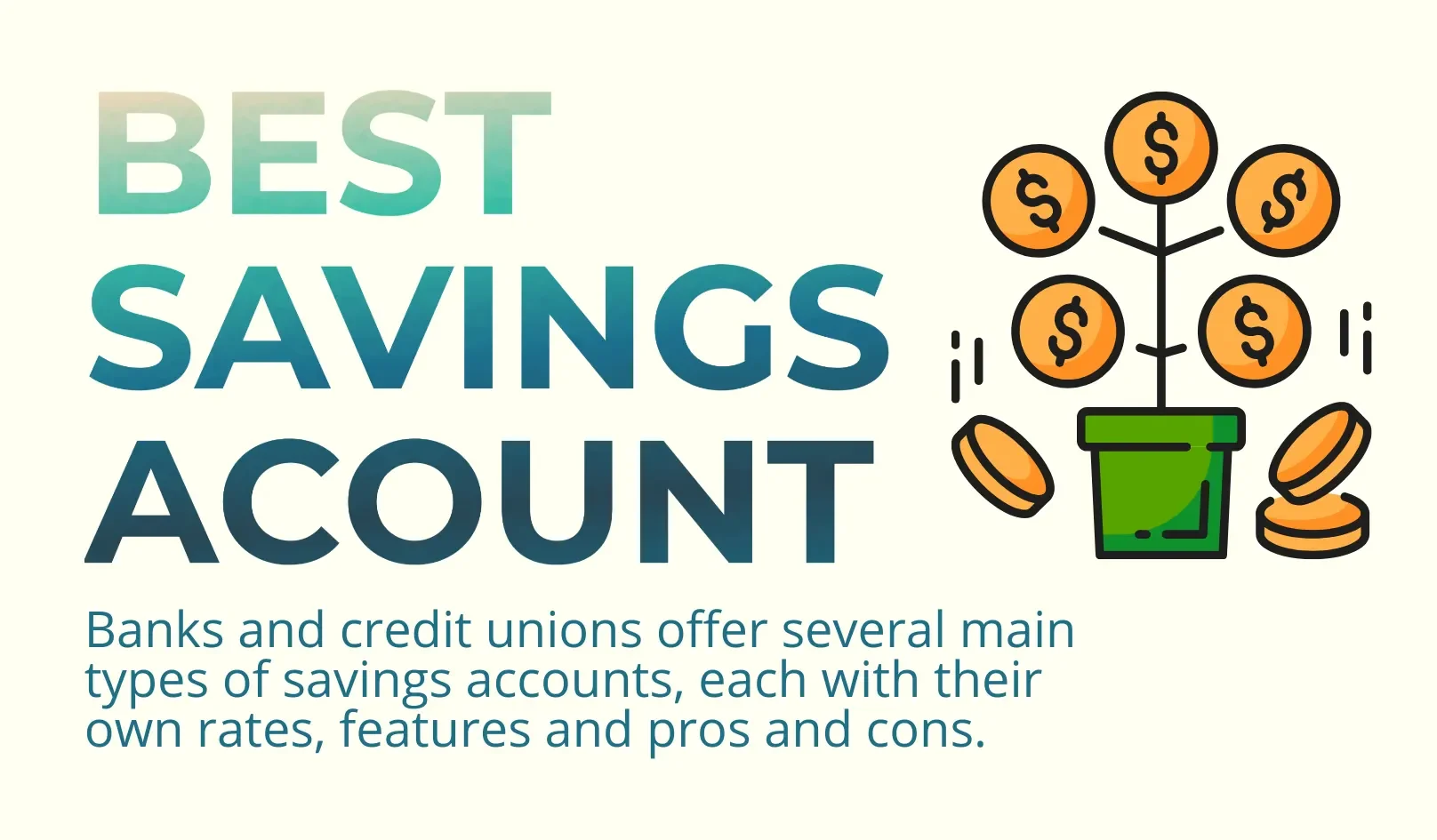
Opening a savings account is one of the best financial decisions you can make. Putting money aside in a separate savings allows you to earn interest, while keeping those funds accessible for future needs. But with so many savings accounts to choose from, how do you find the best one for your situation? Let’s get right into it.
Types of Savings Accounts
Banks and credit unions offer several main types of savings accounts, each with their own rates, features and pros and cons.
1. Basic Savings Account
This is the most straightforward type of savings account.
Pros:
- Easy to open and start saving
- Funds remain accessible
- Protection through FDIC or NCUA insurance
Cons:
- Extremely low interest rate (typically under 0.50% APY)
- Limited to 6 or fewer transactions per month
A basic savings works well as an emergency fund or extra funds you want to keep safe and available. But the negligible interest earned means your money won’t grow much.
2. High-Yield Savings Account
For better rates, a high-yield savings account pays significantly more interest than a basic account.
Pros:
- Competitive interest rates (over 2% APY)
- Funds stay protected and available
Cons:
- Higher minimum balances to earn interest
- Transaction limits per month still apply
Opening a “high-yield saver” from an online bank is one of the best options if you want your money to grow faster while retaining access. Just be aware of balance requirements.
Useful Information: How does a Savings Account Work?
3. Money Market Deposit Account (MMDA)
A money market deposit account held at a bank or credit union provides both savings and checking features.
Pros:
- Pays interest like a savings account
- Check writing and debit card access like checking
- Potential for higher rates than basic savings
Cons:
- Transaction limits still apply per month
- Requires higher minimum balances
An MMDA combines savings interest with the flexibility of a checking account if you keep a higher balance.
4. Certificate of Deposit (CD)
Want guaranteed returns on your savings? A CD locks in an interest rate for a set period of time from 3 months up to 5 years.
Pros:
- Very competitive interest rates
- Fixed interest rate and term secures earnings
Cons:
- Early withdrawal penalties apply
- Funds are locked up until maturity
CDs pay higher yields than savings accounts in exchange for committing your money for months or years. It’s a good choice if you know you won’t need the funds short-term.
5. Rewards Savings Account
Some financial institutions offer savings accounts with bonus interest rates when you meet certain requirements like a minimum balance, monthly deposits, or frequent transactions.
Pros
- Chance to earn above average rates
- Extra incentives to save
Cons:
- Numerous eligibility requirements
- Higher monthly fees if you don’t qualify for rewards
Rewards savings accounts encourage consistent saving with perks for loyal customers. But they also limit flexibility with many balance and deposit rules to obtain those perks. While some savings accounts might have stricter requirements. It’s best to research individual accounts to understand their specific terms.
6. Youth/Teen Savings Account
Banks often provide savings accounts specifically geared for those under 18 to help teach financial responsibility.
Pros:
- Learning tool for kids and teens
- Low or no monthly fees
- Parental oversight controls
Cons:
- Very low interest rates
- Limited account features
Savings accounts for minors make it easy to start the savings habit early. Interest earning takes a backseat to the educational benefits with these accounts.
Now that you know the primary options, let’s look at what factors matter most when choosing a savings account.
Choosing the Best Savings Account
With many savings products available from traditional and online banks, how do you narrow it down to the best account? These key considerations can guide your decision:
Interest Rate
If you want your savings to grow faster, seek out accounts with the highest Annual Percentage Yields. Online savings accounts typically pay the most interest these days. But you may need to maintain a higher balance to earn those rates.
Minimum Balances
Many savings accounts require certain minimum deposits to open and avoid monthly fees. Make sure you can meet those balance requirements comfortably.
FDIC/NCUA Insurance
Ensure funds up to $250,000 are protected by FDIC (banks) or NCUA (credit unions) insurance. This coverage guarantees you won’t lose savings even if the institution fails. Most standard savings products qualify.
Access Needs
Determine if you need unlimited access to deposits (like a checking account) or if you can live with monthly withdrawal limits. Savings accounts restrict transfers to 6 per month.
Fees
Watch out for monthly maintenance fees that could eat into savings if account balances drop too low. See what requirements you must meet to avoid those extra costs.
Finally – What to Choose?
Once you know key features and options for savings accounts, you can mix and match to suit your financial priorities.
The best savings account also depends greatly on your specific situation and savings goals at the moment. Weighing your banking preferences along with current needs will point you to the right place for your money today as well your funds for the future.
